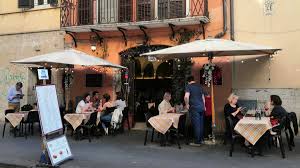How to Avoid Tourist Trap Restaurants?

Traveling the world, exploring the culture and sights of far-away lands is a dream for many. Some people flock to well-known destinations where they can snap selfies in front of the best-known landmarks, others dive deeper into the local culture, mingling with the people who live there, breathing in the atmosphere, and getting to know them better. Some people are especially interested in the spices and tastes of far-off lands: food travel food-related travel is a major trend today, with foodies roaming the land tasting all the unique and amazing dishes of countries often half a world away.
A seasoned foodie will almost certainly find the right place where they can taste the authentic dishes of a country. Others, in turn, can sometimes be deceived into eating at restaurants where the goal of the owners is not to present the local culture in the best possible way but to pocket the money of the tourists passing by. These are often referred to as “tourist traps”… and for the best experience, you’d better avoid them. Here are a few tips on how you can pull it off.
Placed right where the tourists are
A tourist trap restaurant is usually placed right in the vicinity of the places most frequented by tourists – obviously. They have flashy signs, often illuminated, making them attractive for anyone passing by. They often put their menu on a sign in front of the restaurant – and these signs are also frequently in English, not the language of the country you’re in.
When inside, take a look at the menu: if it is translated into several languages, you may have stumbled upon a tourist trap.
Take a look at the patrons
One of the signs you’re in a tourist trap is if you see a bit too many people who are obviously tourists among its patrons: people with backpacks, fanny packs, cameras, and such. Locals won’t carry a camera or a camcorder when they go out dining (not even if they plan to snap a picture of their meal to share on Instagram). If too many of the patrons are obviously tourists, beware.
Recommendations and menus
We mentioned the menu above – if it’s multilingual, it’s suspicious. But its size can also be a telltale sign of something fishy going on there: if it’s too thick, with too many dishes on it, especially dishes that are not “native” to the country you’re in (like wonton soup and cheeseburger in a restaurant in Rome), you can almost certainly tell that you’re in a tourist trap.
Also, if the receptionist at the hotel where you’re lodged recommends it, you should be suspicious. Restaurants often give hotel personnel “incentives” to send patrons to their joint – the fact that the receptionist recommends a restaurant doesn’t mean it’s a place you’ll want to eat at.
It is great to have a familiar meal while traveling to a far-off land but if your goal is to experience the true local tastes and dishes, you’d better avoid tourist traps. Instead, try to spot the places where the locals eat.






